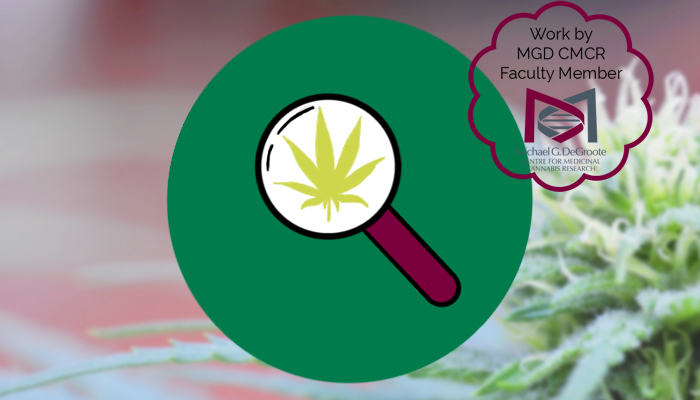Are Canadian women using cannabis during pregnancy and lactation?

Why was this study conducted? What does this study add? Is there anything else I should know? Bartlett K, Kaarid K, Gervais N, Vu N, Sharma S, Patel T, Shea AK. Pregnant Canadians’ perceptions about the transmission of cannabis in pregnancy and while breastfeeding and the impact of information from health care providers on discontinuation of use. J Obstet Gynaecol Can 2020;42(11):1346-1350 Vanstone M, Taneja S, Popoola A, Panday J, Greyson D, Lennox R, McDonald SD. Reasons for cannabis use during pregnancy and lactation: a qualitative study. CMAJ 2021;193: E1906-14
Bartlett K, Kaarid K, Gervais N, Vu N, Sharma S, Patel T, Shea AK. Pregnant Canadians’ perceptions about the transmission of cannabis in pregnancy and while breastfeeding and the impact of information from health care providers on discontinuation of use. J Obstet Gynaecol Can 2020;42(11):1346-1350 (abstract)
Vanstone M, Taneja S, Popoola A, Panday J, Greyson D, Lennox R, McDonald SD. Reasons for cannabis use during pregnancy and lactation: a qualitative study. CMAJ 2021;193: E1906-14 (article)
Why was this study conducted?
What does this study add?
The quantitative study attempted to estimate the prevalence of cannabis use during pregnancy and lactation by surveying women attending obstetrical, midwifery and family practice clinics in the greater Hamilton, Ontario area. Of the 478 pregnant women who participated, about two-thirds (65.3%) reported lifetime cannabis use, but only 11.3% reported use in pregnancy (including before knowledge of pregnancy) and a smaller proportion (4.2%) at the time of the interview. Almost all (96.2%) of the women planned to breastfeed, with 4.8% reporting they intended to use cannabis while breastfeeding. Awareness of the ability of cannabis to be transmitted to the fetus or infant during pregnancy and lactation was 94.3% and 91.3%, respectively. Only a quarter (23.4%) reported receiving information about cannabis from a healthcare provider; discussion with a healthcare provider was not associated with lower cannabis use during pregnancy.
The qualitative study recruited 52 volunteers who used cannabis prior to pregnancy, with recruitment designed to explore study themes. Three broad reasons for using cannabis were explored: 1) sensation-seeking (fun and enjoyment); 2) management of chronic disease symptoms or symptoms related to pregnancy (e.g., nausea, pain, anxiety); and 3) coping with difficult or unpleasant non-medical conditions (e.g., sleep, stress relief). Overlap was common, but prior to pregnancy (n=52) the leading reasons tended to be sensation-seeking and symptom management. For those who chose to use cannabis during pregnancy (n=30), reference to sensation-seeking became less common. For those who chose to use cannabis during lactation (28 out of 33 participants who discussed lactation), the distribution of reasons resembled those of the pre-pregnancy stage.
Is there anything else I should know?
Neither study used random sampling. For the quantitative study, 531 patients were approached in a single geographic area and although the response rate was 90%, the requirement of English language literacy means participants may not be representative of the wider population of pregnant women. The qualitative study was also limited to English-language participants and, due to the grounded theory methodology that was used, not designed to be representative of the larger Canadian population (e.g., there were 21 participants from Ontario but only 2 from Quebec). For both studies, demographics are given but due to the differences in sample sizes and methods, comparisons are difficult.
Research - Pregnancy